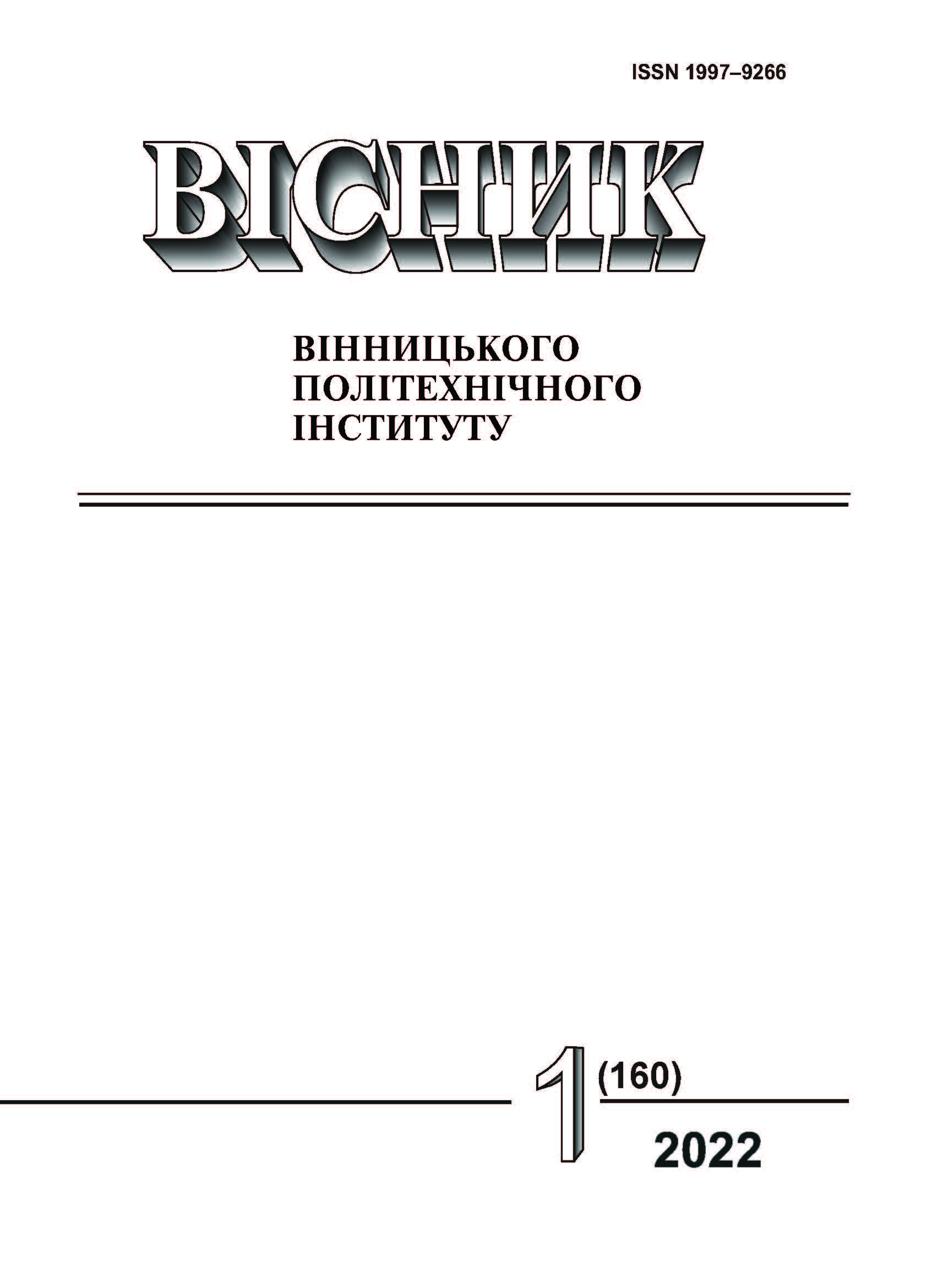Features of the Control Block for Correlation Image Processing
DOI:
https://doi.org/10.31649/1997-9266-2022-160-1-65-69Keywords:
control block, microprogram automaton, Moore automaton, R-automatonAbstract
The widespread introduction of mobile robots in various areas of human activity requires their further improvement and modernization of basic systems in their composition. The most involved in this case are the means of technical vision in the onboard systems of mobile robots, as well as the associated control blocks. When the mobile robot functions in automatic mode, it is necessary to take into account several features and limitations that are due to the nature of the practical tasks. For the control block, first of all, it is to ensure the speed of operation and compactness of implementation with a focus on FPGA technology. In this paper, these aspects of the construction of the control block are considered in terms of the implementation of correlation processing of static digital (binary) images. As a specific example, an optoelectronic system with a correlation binary matrix and a matrix of LEDs to visualize the generated optical correlation relief was chosen. Such systems are most often part of onboard control systems for mobile robots and are designed to detect and identify objects. The structure of the control block is proposed, taking into account the peculiarities of correlation processing in the optoelectronic system. The control block contains three counters: a clock counter, an address counter for reading from the reference memory, an address counter for an offset in the correlation matrix, and a control device. The control device as a part of the control block as the microprogram automaton (MPA) with the use of features of synthesis of the R- automaton is constructed. A feature of the R-machine is the implementation of its storage part on the shift register (R) in contrast to the parallel registers (T) and counters (ST). Such an approach simplifies the combinational part of the MPA with the possibility of increasing its regular memory based on the shift register. This allows you to effectively implement such structures in a single chip with FPGA architecture.
References
СПИСОК ВИКОРИСТАНОЇ ЛІТЕРАТУРИ
У. Прэтт, Цифровая обработка изображений, кн. 2. Москва: Мир, 1982.
В. Н. Бондарев, Г. Трестер, и В. С. Чернега, Цифровая обработка сигналов. Харьков, Украина: Конус, 2001.
Б. А. Алпатов, П. В. Бабаян, О. Е. Балашов, и А. И. Степашкин, Методы автоматического обнаружения и сопровождения объектов. Обработка изображений и управление. Москва, Россия: Радиотехника, 2008.
Б. А. Алпатов, П. В. Бабаян, Л. Н. Костяшкин, и Ю. Н. Романов, «Обработка и анализ изображений в бортовых оптико-электронных системах», Труды науч.-техн. конф.-семинара «Техническое зрение в системах управления мобильными объектами - 2010». Москва, Россия: КДУ, 2011.
А. В. Гаврилов, В. В. Губарев, К. Х. Джо, и Х. Х. Ли, «Архитектура гибридной интеллектуальной системы управления мобильного робота», Вестник Новосибирского ГТУ, № 2, с. 3-13, 2014.
Т. Б. Мартинюк, А. В. Кожем’яко, М. Г. Тарновський, і Д. О. Шаромов, «Реалізаційні моделі оптоелектронного корелятора», Інформаційні технології та комп’ютерна інженерія, № 2 (39), с. 53-59, 2017.
Т. Б. Мартинюк, С. В. Богомолов, С. М. Фащілін, і Е. С. Генеральницький, «Аналіз зображень в оптоелектронній системі з кореляційною матрицею», Інформаційні технології та комп’ютерна інженерія, № 3 (43), с. 39-46, 2019.
Ф. Жимарши, Сборка и программирование мобильных роботов в домашних условиях. Москва, Россия: НТ Пресс, 2007.
Т. Б. Мартинюк, А. В. Кожем’яко, І. Ю. Видмиш, і Д. О. Шаромов, «Нормалізована кореляційна обробка двовимірних зображень», Інформаційні технології та комп’ютерна інженерія, № 3 (37), с. 44-50, 2016.
А. А. Баркалов, «Оптимизация логической схемы автомата Мура на программируемых БИС», Управляющие системы и машины, № 6, с. 38-41, 2001.
В. П. Кожемяко, Т. Б. Мартынюк, и К. В. Кожемяко, «Синтез устройств управления на R-автомате», Управляющие системы и машины, № 1/2, с. 22-25, 1995.
Т. Б. Мартинюк, А. В. Кожем’яко, і Н. В. Фофанова, «Два варіанти синтезу мікропрограмних R-автоматів», Вісник Вінницького політехнічного інституту, № 4, с. 47-53, 1998.
В. П. Кожем’яко, Т. Б. Мартинюк, Н. В. Фофанова, і В. В. Дмитрук, «Порівняльний аналіз варіантів синтезу мікропрограмних автоматів», Оптико-електронні інформаційно-енергетичні технології, № 1 (9), с. 225-233, 2005.
А. А. Баркалов, и Р. М. Бабаков, «Операционное формирование кодов состояний в микропрограммных автоматах», Кибернетика и системный анализ, № 2, с. 21-26, 2011.
Р. М. Бабаков, «Алгебраический синтез микропрограммного автомата с операционным автоматом переходов», Інформаційні технології та комп’ютерна інженерія, № 2, с. 35-41, 2017.
В. Л. Шило, Популярные цифровые схемы, справ. 2-е изд. Челябинск: Металлургия, 1989.
В. В. Соловьев, Проектирование цифровых систем на основе программируемых логических интегральных схем. Москва, Россия: Горячая линия – Телеком, 2001.
В. Соловьев, и А. Климович, «Использование входных буферов ПЛИС в качестве элементов памяти конечных автоматов», Chip News, № 2 (22), с. 24-28, 2003.
В. Б. Стешенко, ПЛИС фирмы «Altera»: элементная база, система проектирования и языки описания аппаратуры. Москва, Россия: Издательский дом «Додэка – XXI», 2002.
С. М. Ачасова, Алгоритмы синтеза автоматов на программируемых матрицах. Москва: Радио и связь, 1987.
Downloads
-
pdf (Українська)
Downloads: 121
Published
How to Cite
Issue
Section
License

This work is licensed under a Creative Commons Attribution 4.0 International License.
Authors who publish with this journal agree to the following terms:
- Authors retain copyright and grant the journal right of first publication.
- Authors are able to enter into separate, additional contractual arrangements for the non-exclusive distribution of the journal's published version of the work (e.g., post it to an institutional repository or publish it in a book), with an acknowledgment of its initial publication in this journal.
- Authors are permitted and encouraged to post their work online (e.g., in institutional repositories or on their website) prior to and during the submission process, as it can lead to productive exchanges, as well as earlier and greater citation of published work (See The Effect of Open Access).





